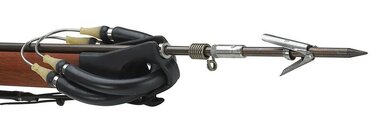Stiffness of the mono (300-400 lb test typically) will work against it. You could probably get it on the reel, but it will take a set, so dyneema is typically used.
For reef fish/bottom fish, I usually only see reels in use for freedivers. The line wrap is typically not enough as the diver needs to return to the surface shortly after the shot. Either a reel, or a float line is typically used. I don't see it in use on scuba, though I guess there may be a use for it on pelagics.
A reel wasn't anywhere in my immediate future anyway... I hope by then I have would have a better understanding what the hell I'm doing. (I mean, I can hope anyway!).




